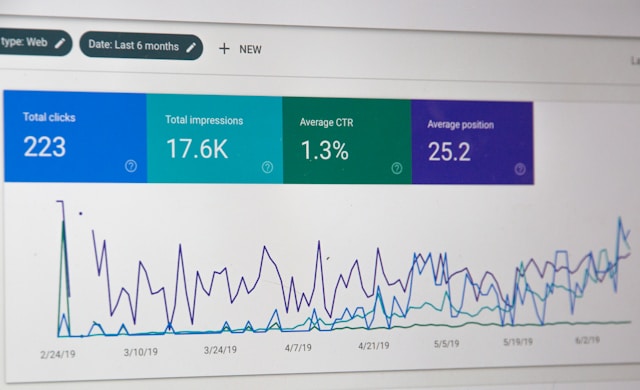Running a small business today means competing not just with other local shops but also with online giants. The good news is that Google Ads gives local businesses a chance to stand out directly in front of nearby customers. Whether you run a restaurant, a salon, a gym, or a home service company, learning how to use Google Ads for local business can make the difference between struggling for customers and having a steady stream of new leads.
In this guide, we’ll break down exactly how Google Ads works for small businesses, the types of campaigns you should consider, and strategies to maximize your budget.
Why Google Ads Matter for Local Businesses
When someone searches “pizza near me” or “plumber in Dallas,” they’re actively looking to make a purchase. Google Ads places your business in front of these high-intent customers at the exact moment they’re ready to act. Unlike organic SEO, which can take months, Google Ads for small business delivers immediate visibility.
Benefits of Google Ads for Local Business
Before jumping in, it’s worth understanding why Google Ads is so powerful for small businesses:
-
Immediate visibility – Appear at the top of search results instantly
-
High buyer intent – Ads reach customers who are actively searching for your services
-
Budget flexibility – You control daily ad spend and can start small
-
Precise targeting – Ads can show to people within your city, ZIP code, or radius around your store
-
Trackable results – Every click, call, or visit can be measured
This combination makes Google Ads one of the most cost-effective ways for local entrepreneurs to attract new business.
Setting Up Google Ads for Local Business
Here’s a step-by-step overview of how to get started:
-
Create a Google Ads account – Sign up at ads.google.com.
-
Link your Google Business Profile – This ensures your business info, location, and reviews appear alongside ads.
-
Choose your campaign goal – Decide whether you want phone calls, website visits, form submissions, or foot traffic.
-
Set up billing – Add a payment method and daily budget.
Once your account is ready, you can choose the type of campaign best suited to your goals.
Types of Google Ads for Local Business
Not all ads are created equal. For small businesses, the most effective campaigns include:
1. Search Ads
These are text ads that appear when someone searches for terms like “best coffee shop in Austin” or “emergency plumber near me.” They are highly effective for capturing local intent.
2. Local Services Ads
Ideal for service providers (electricians, cleaners, plumbers). These ads show at the very top of search results and are pay-per-lead, meaning you only pay when someone contacts you.
3. Display Ads
Banner-style ads that appear on websites and apps. These are useful for building local awareness and retargeting past visitors.
4. YouTube Ads
Video ads targeting viewers in your geographic area. Great for building brand recognition and engaging local audiences.
Targeting the Right Audience
The key to successful local advertising is targeting. Here’s how to make sure your ads reach the right people:
-
Location targeting – Select specific cities, ZIP codes, or set a radius around your store.
-
Local intent keywords – Use phrases like “near me,” “in [city],” or “[service] nearby.”
-
Device targeting – Increase bids for mobile devices since many people search for local services on the go.
For example, a gym in Los Angeles might target “fitness classes near me” or “best gym in LA.”
Budgeting and Bidding Strategies
You don’t need a massive budget to see results. Here’s how to approach spending:
-
Start small – Test with $10–$20 per day and scale up based on results.
-
Use CPC (cost-per-click) – Pay only when someone clicks your ad.
-
Focus on high-intent keywords – Terms that show buying intent, like “book dentist appointment” or “24-hour locksmith.”
Monitoring and adjusting bids ensures you don’t overspend while still reaching valuable leads.
Tips to Improve Results
Maximizing ROI is about more than just setting up ads—it’s about refining them.
-
Write compelling ad copy – Include location-specific keywords and a clear call to action (“Call Now for Same-Day Service”).
-
Use ad extensions – Add location, phone numbers, site links, or customer reviews to make ads more engaging.
-
Track conversions – Measure calls, form fills, or in-store visits.
-
A/B test ads – Run multiple versions to see which headlines and descriptions perform best.
These small tweaks can dramatically improve your ad performance over time.
Measuring Success
Running Google Ads for local business is only effective if you know what’s working. Here’s what to monitor:
-
Clicks and impressions – How many people saw and engaged with your ad.
-
Conversions – Calls, sign-ups, or purchases directly from ads.
-
Cost-per-conversion – How much you’re paying for each new customer.
-
Return on investment (ROI) – Compare ad spend to the revenue generated.
By analyzing this data, you can cut wasted spending and double down on campaigns that bring in real results.
Conclusion
Learning how to use Google Ads for local business is one of the smartest investments a small business owner can make. From showing up when customers search “near me” to targeting people right in your neighborhood, Google Ads provides a fast, measurable way to drive foot traffic, phone calls, and online sales.

